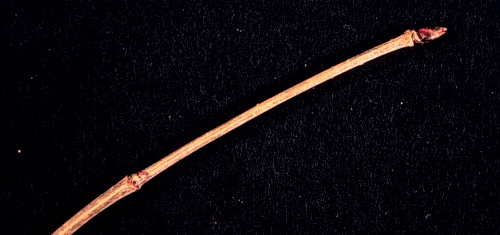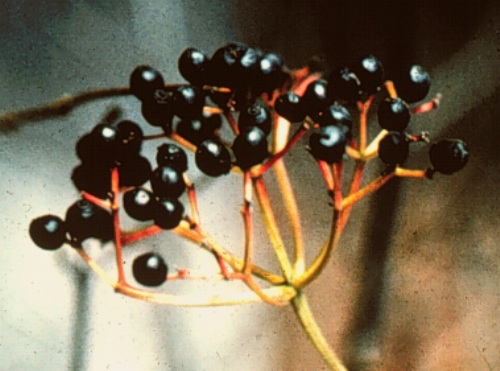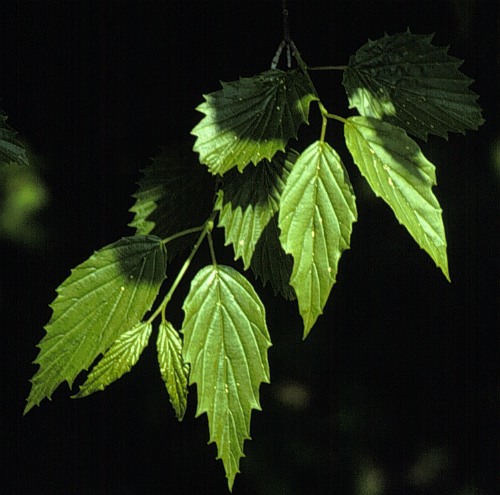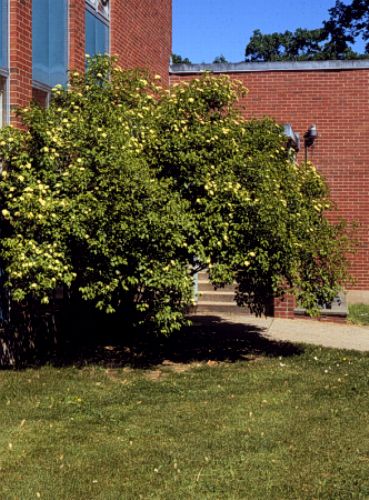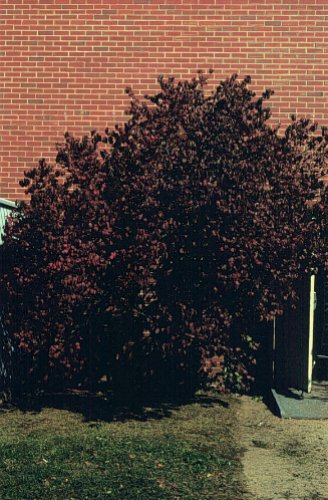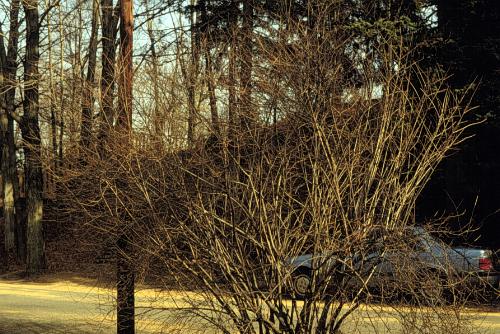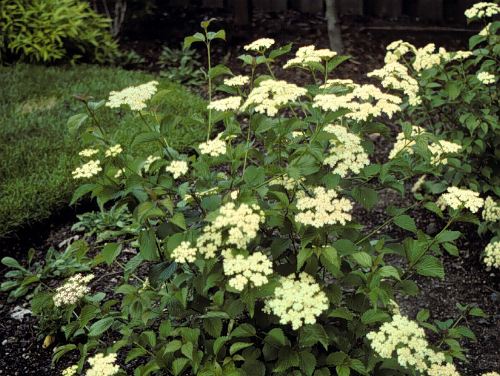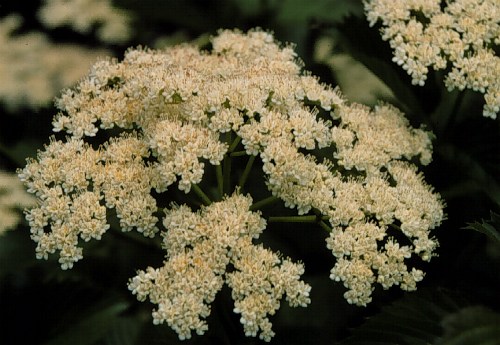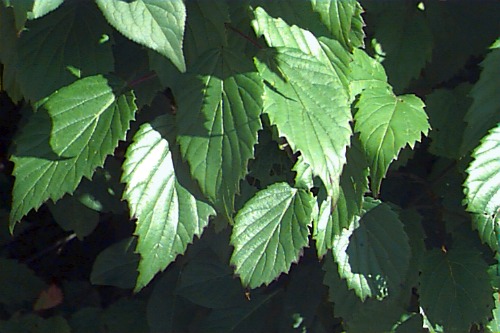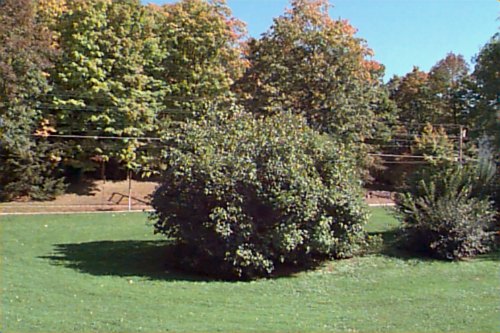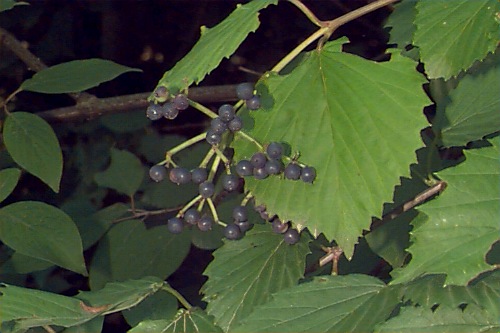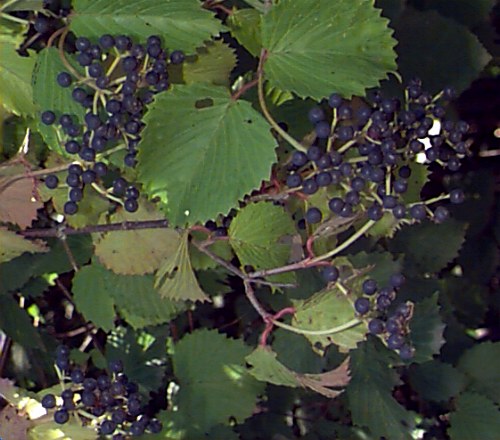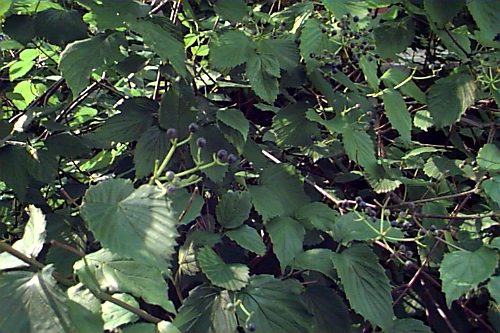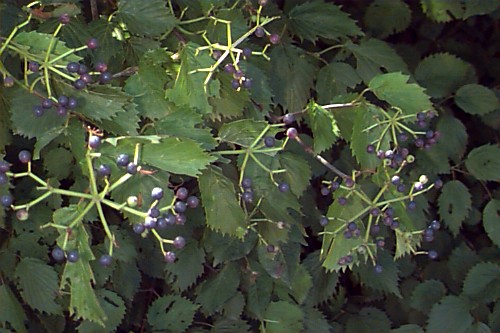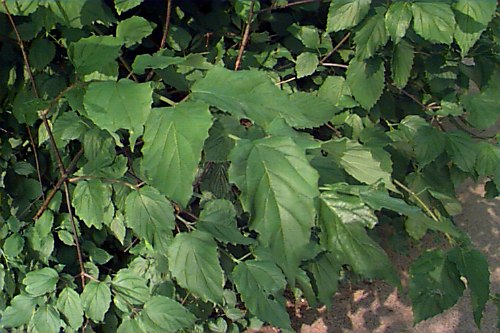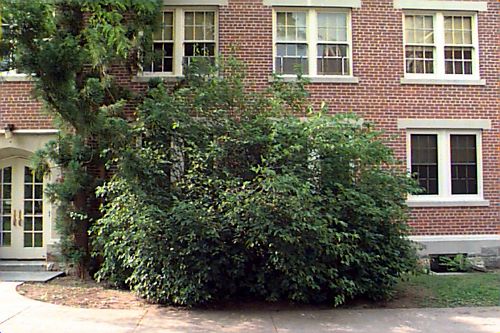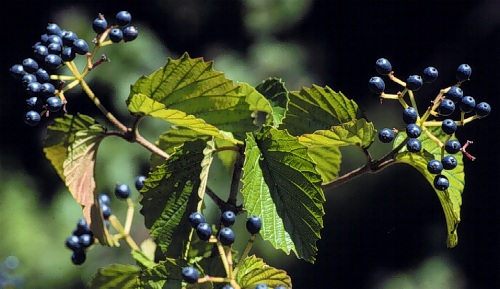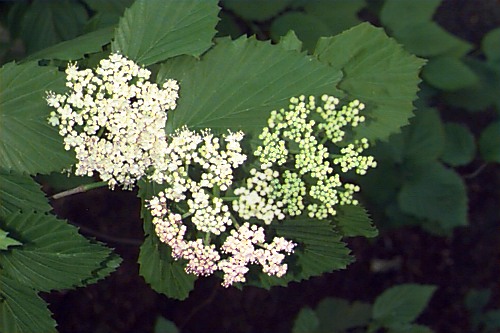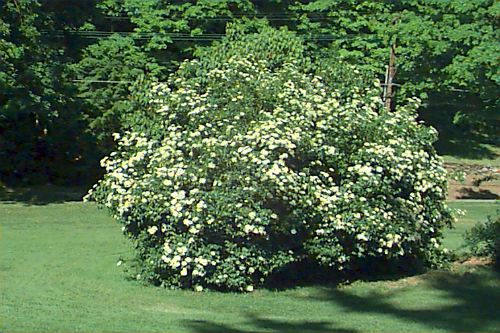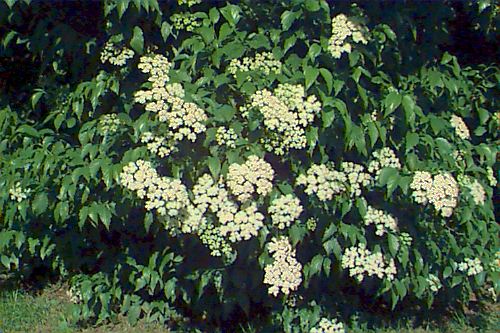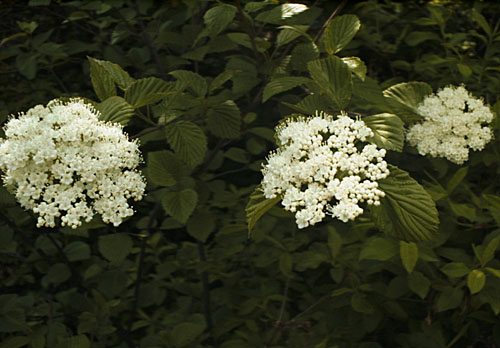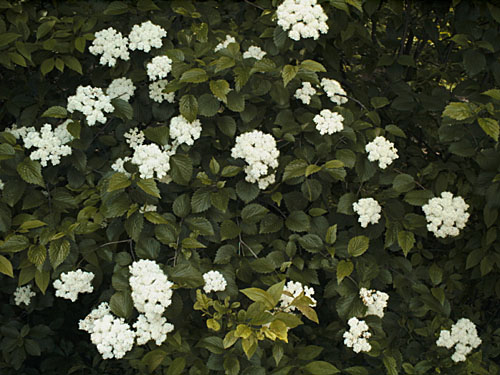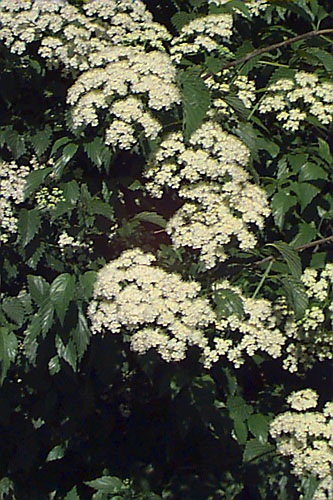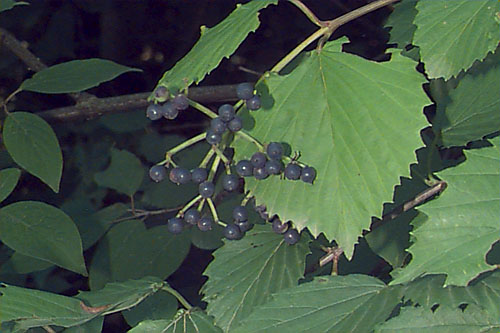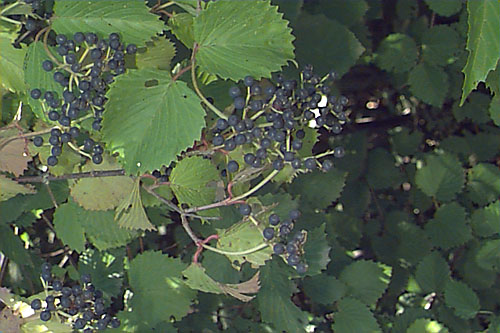Viburnum dentatum
Arrowwood Viburnum
Caprifoliaceae
ExpandHabitat
- native to eastern North America
- cold hardy to zone 2
Habit and Form
- a dense, multistemmed shrub
- typically 5' to 9' tall and wide
- native plants can be as tall as 15'
- deciduous
- branching is upright and spreading, eventually arching over at the tips
- overall shape is rounded
- suckers profusely from the base
Summer Foliage
- oppositely arranged leaves
- simple leaves
- leaf margins coarsely toothed
- leaves are 2" to 4.5" long
- leaves are 1" to 4" wide
- leaf bases are shallowly heart-shaped
- veins are prominent, with the leaf puckering between veins
- either a shiny or flat dark green
Autumn Foliage
- color development is highly dependent on the individual plant
- some plants turn yellow
- some plants turn red to reddish purple
- selections have been made for those with the red fall color
- color development occurs relatively late in the fall
Flowers
- small creamy white flowers held in flattened clusters
- flower clusters are around 3" across
- bloom time is late May to early June
- flower cluster can be numerous
- moderately showy in bloom
Fruit
- blue-black color
- some plants have more intense blue fruit color
- held in flattened clusters
- each fruit is about 0.25" in diameter
- modest ornamental interest from the fruit
- fruit is enjoyed by birds
Bark
- gray
- stems are slender, so not important ornamentally
Culture
- very easy to grow
- full sun to partial shade
- soil adaptable from dry to fairly wet
- easily transplanted
Landscape Use
- useful for its extreme durability
- border
- screen
- naturalizing
- parking lots
- mass plantings and groupings
- to attract birds
- provides a nice neutral effect in the landscape
- difficult sites
Liabilities
- free from serious problems
- may need occasional rejuvenation pruning
ID Features
- opposite leaves with coarse, regular teeth along the margin
- blue-black fruits in flat clusters
- dense, twiggy, suckering habit
- flat clusters of small creamy white flowers
Propagation
- by cuttings
- by seed
Cultivars/Varieties
'Christom' (Blue Muffin™) - A new selection that may hold great promise, this is a true dwarf that grows densely to 4' tall and wider. It blooms heavily with good set of deep blue fruit. It may be the best selection of this adaptable native for smaller gardens.
'Emerald Lustre' - This plant is a selection of Viburnum bracteatum, which is closely allied or identical to V. dentatum. Its most notable feature is the glossy dark green foliage and its performance in warmer zones from 6 south. The fruit are abundant and colored purple-black, while the fall foliage is yellow-bronze. It is probably best reserved for use in warmer coastal areas.
'Moonglow' - A selection out of Pennsylvania, this cultivar is notable for its larger leaves which are glossy dark green. The fruit appear slightly later than other selections and are a bit larger.
'Morton' (Northern Burgundy®) - This selection blooms in late June and produces a prolific crop of blue-black fruit. The fall color is burgundy and the plant grows a bit larger than other selections, to 12' tall and wide.
'Ralph Senior' (Autumn Jazz®) - Selected for its excellent shape and form, this plant grows 10' to 12' tall and 8' to 10' wide. It has an upright, vase-like shape with fall color that is a mix of yellow, red and purple.
'Patzam' (Pathfinder™) - This is a new cultivar that grows upright to 6' tall and 4' wide. It has handsome foliage that is glossy dark green and serrated. It may be useful where a smaller plant is needed.
'Perle Bleu' - This new selection is well-named, for it features ample production of round, blue fruit. It may be useful in attracting bird life, plus this 10'-12' tall shrub is attractive in its own right.
'Synnestvedt' (Chicago Lustre®) - Noted for its nice glossy, deep green foliage on an upright rounded shrub, this plant grows 8' to 10' tall and wide. The fall color is reddish purple and the selection blooms slightly later than the species. It is hardy to zone 5.
